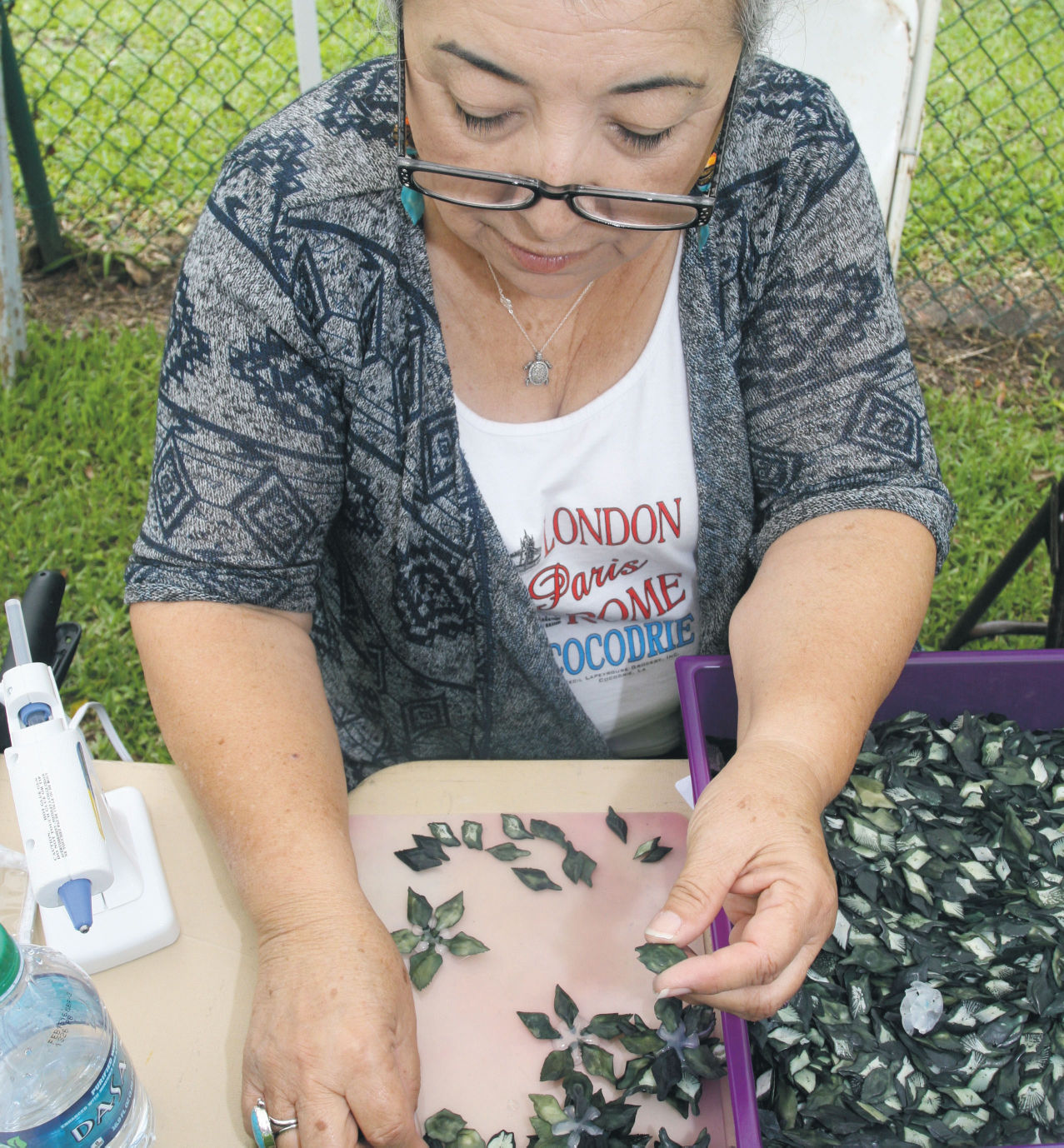
DANOS loving its DIGS
April 22, 2015When seconds count
April 22, 2015A principle Janie Verret Luster has long held close relates to her Native American heritage, a proverb that says “treat the earth well. It was not given to you by your parents, it was loaned to you by your children.”
Living the concept of reduce, recycle and re-use through her crafts has now earned the Dularge grandmother a special honor; Janie has been selected to feature her work at the Smithsonian Institute’s Living Earth Festival, scheduled for July 17-19 in Washington D.C.
Of key interest to festival organizers is the jewelry Janie makes out of garfish scales, considered a living examples of how every part of a resource can somehow be used or recycled.
Janie’s jewelry has also won wide praise for its beauty.
“Some of the scales have fossil type images that resemble the Virgin Mary or an Indian chief,” Janie points out, while displaying her handiwork at the Chauvin Sculpture Garden during last week’s blessing of the shrimp fleet.
A member of the United Houma Nation, Janie has done the meticulous work of forging jewelry out of alligator gars for three decades.
Fishing gars, she said, is part of a long family tradition carried on by her cousin, Rickie Verret.
He sells the meat, which is used in recipes for boulettes, tasso, gumbo or fish nuggets. Not letting any of the fish go to waste, he passes the scales on to Janie, who dries and then dyes them.
Rickey’s operation has a special ecological edge. Allyse Ferrera, a professor of biological sciences at Nicholls State University, often accompanies him on fishing trips in order to monitor the species. Plentiful in Louisiana, their populations have been dramatically reduced in other parts of the country.
Janie’s unique basket weaving has brought her a lot of attention. Her work, which employs a method unique to her people called a “Houma half hitch,” was recognized in 2004 when she was honored with the Folklife Fellowship Award from the Louisiana Division of the Arts.
But her garfish work has also had an international audience. At the New Orleans Jazz and Heritage Festival in 2010 a French tourist, impressed by Janie’s work, invited her to a Christmas market in Mont-beliard, eastern France.
“These markets are very popular there, and this one was highlighting Louisiana crafts, food and culture. The theme was hearts so we made these beautiful wall decorations out of red garfish scales,” Janie said. “We were there for all of December and lived in dorms and chalets. My son got to see snow.”
At one point there participants were warned of coming bad weather that could cause flooding and were asked to move their crafts to a safer second floor.
“Being from southeast Louisiana that was kind of a deja vu moment for me.” Janie said.
The next year she traveled to Larochelle, France for a festival also showcasing Louisiana culture.
“As soon as you entered this giant tent you saw an exhibit on the Houmas Indians decorated with our emblem, the red crawfish. It made me proud that we received this recognition, but we’ve had a special friendship with the French for 300 years,” Janie said. “Continuing to walk you came to the French Quarter and then a swamp scene right out of The Princess and the Frog. It was so detailed with the cypress trees and the Spanish moss. They had gone to great effort to make it authentic. There was a riverboat painted on the wall in front of a pond that looked so real
one guy fell into the pond.”
Creating and selling world-class crafts is in keeping with family tradition. Both of Janies’s parents were artists of humble beginnings.
Her father, John Gustave Verret Sr., who was born in 1926, spent the first seven years of his life living in a palmetto hut. Neither of her parents had a formal education. But they eked out a traveling to folk festivals where they sold items they made and demonstrated their skills.
Her mother, Mary, also had talent.
“My dad would demonstrate how to build palmetto huts, and my mom would make dolls out of Spanish moss,” Janie said. “She liked flowers, so she would make them from all kinds of fish scales.”
“I make the flower pins as well,” Janie continued. “But also earrings, necklaces, bracelets and crosses. My flower pins have centers made from the mustard seed, the seed of faith. But not always.”
“I started using the mustard seed in 1992. That was a bad year for me. My dad had passed, my husband had been badly injured in an accident, and our family was just trying to survive on very little,” Janie said. “Then Hurricane Andrew happened.”
The monster storm hit hard in Dularge and surrounding communities. Volunteers from all over the U.S. arrived to help rebuilding efforts.
“And wouldn’t you know it,” she said. “Those volunteers wanted to buy local crafts to take home. The garfish has been a blessing in my life”
She sold enough garfish jewelry in one week to pay a light bill, she said, and groceries in the next week.
Though she likes making the local craft circuit – in addition to the boat blessing she took part recently in the Leeville Arts and Heritage Festival – Janie admits she’s looking forward to seeing the nation’s capital in July and proudly representing the traditions of her ancestors.
And she sees good signs that the tradition will continue long into the foreseeable future.
Janie has encouraged all 5 of her children to tap their imaginations crafting garfish-scale jewelry and other crafts.
“Even my 11-year-old grandson, Brennen, created a turtle pin out of the scales,” she said.
Jamie Verret Luster displays her hand-crafted gar-fish scale jewelry, which she will be showing during a July presentation at the Museum of the American Indian in Washington D.C. Her work is well-known throughout the Bayou Region.










